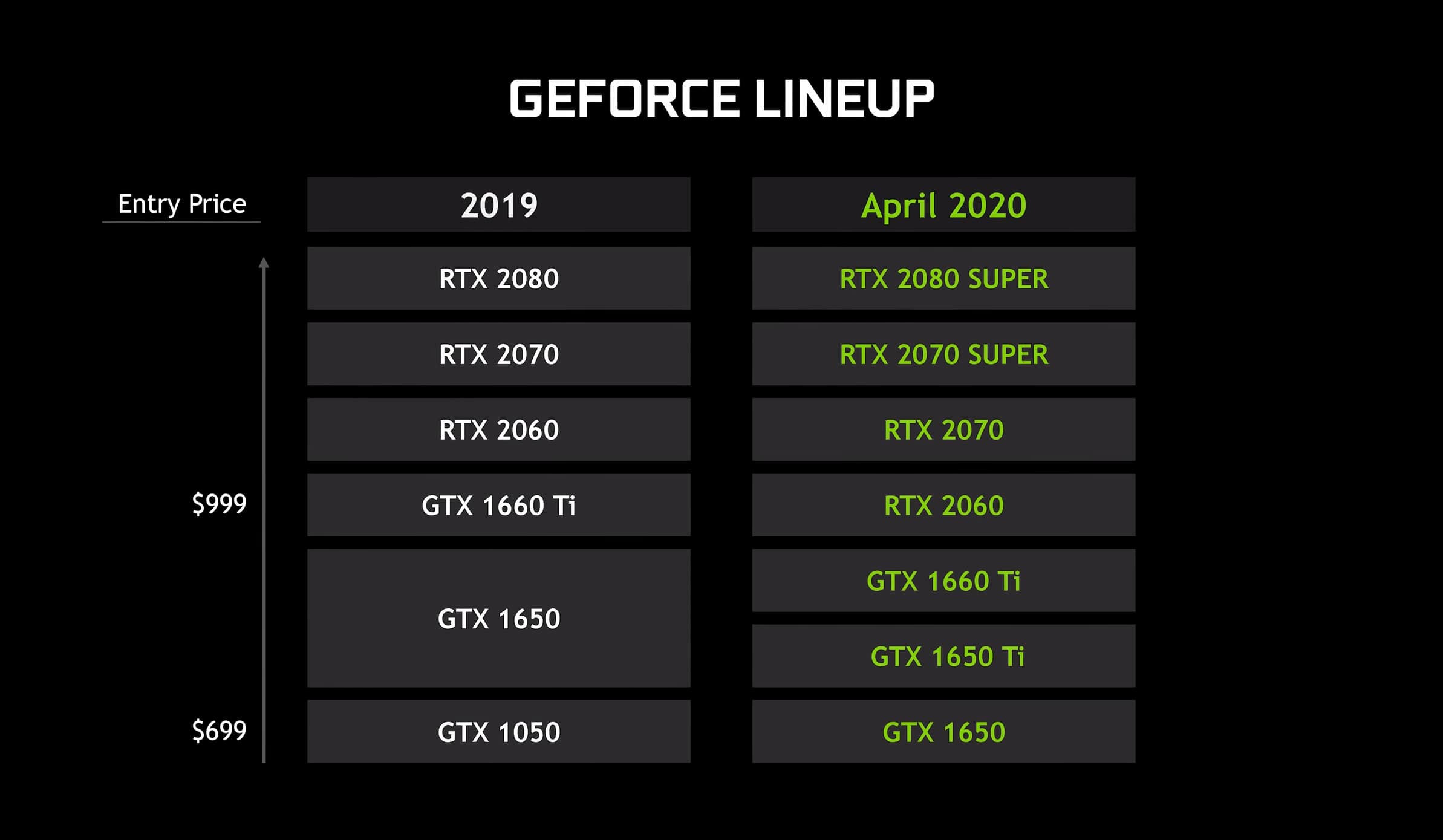I disagree. Anyone who spends $1000-3000 on a gaming laptop without informing themselves deserves the performance they bought because they are so ignorant of how things work that they'll never know the difference anyway.
Nvidia's laptop GPU naming convention follows the desktop GPUs on all but one part, the lowest-end 1650. They have the same core count as the desktops but are clocked lower because the laptop can't handle the power requirements of the power pig desktop cards. The Max-Q versions get an even lower power limit and memory bandwidth than the regular ones to fit in smaller laptops. Still the same number of cores though.
Exceptions:
The laptop 2080 Super doesn't get the desktop 2080's special 15.5GHz memory though, but then even the 2080 Ti doesn't get that.
The 1650 laptop variant actually gets more cores than the desktop GPU, so you actually get a better part there.
